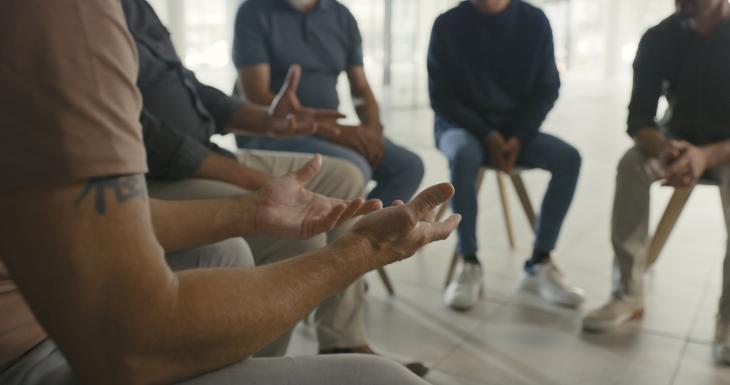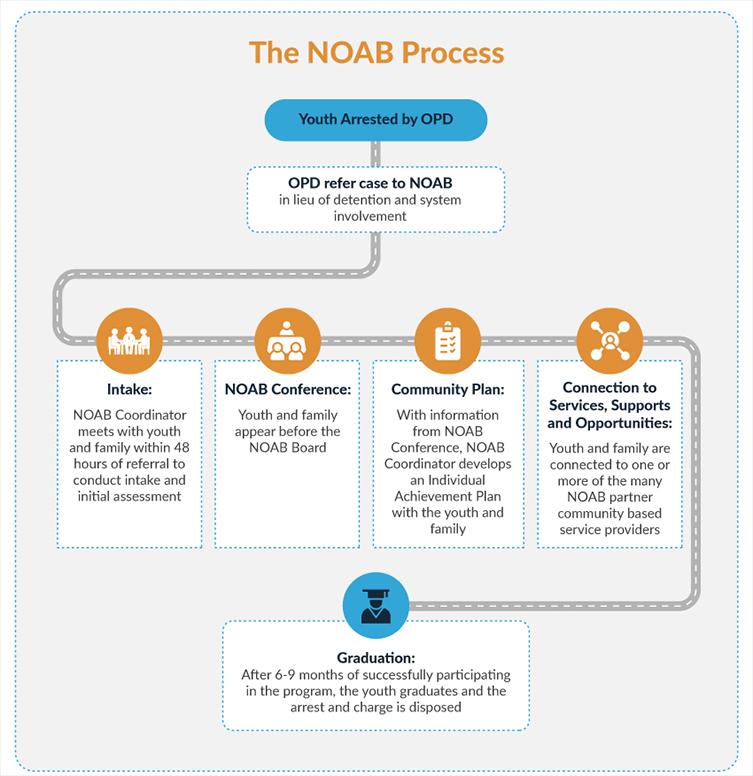Evaluation of Oakland and Richmond’s Neighborhood Opportunity and Accountability Board (NOAB)

Over-policing practices contribute to racial disparities in arrest and detainment and can escalate violence and trauma to those arrested, their family members, and their communities. To reduce over-policing and its disproportionate impacts on individuals of color and their communities, policymakers are increasingly embedding community voices into the policing and justice processes, including through restorative diversion practices. In contrast to traditional punishment, restorative diversion engenders accountability by engaging community members to holistically address community safety. Early research on restorative diversion practices suggests that it reduces rates of victimization and injuries while redeploying resources to community programming.
The NOAB Program
AIR is evaluating a point-of-arrest restorative diversion program: The National Institute for Criminal Justice Reform’s (NICJR’s) Neighborhood Opportunity and Accountability Board (NOAB). NICJR reimagines the partnership between police and the community in Oakland, California. NOAB diverts youth to programming prior to court involvement and offers youth the opportunity to participate in community- and strengths-based diversion services based in restorative justice and conducted in collaboration with members of the youth’s family and community. By diverting youth in lieu of detainment and justice system intervention, the NOAB process offers a promising opportunity to address harm and provide support with minimal justice system engagement.

Graphic: NICJR (2023)
Our Evaluation
With funding from AIR’s Equity Initiative, AIR is conducting a four-year evaluation of the NOAB program. The study is examining the implementation of NOAB and its outcomes and impact on youth and family health and well-being, education, and future justice system involvement. To examine the implementation of NOAB and perceptions of the program, AIR is using interviews and NOAB administrative records to assess the implementation of NOAB and to examine the extent to which NOAB meets the needs of youth and their families. In addition, we are reviewing documents and administrative data to estimate the cost of NOAB. To examine the outcomes and impacts of NOAB, we will collect surveys from participating youth and families at entry to and exit from NOAB, NOAB enrollment records, as well as juvenile and criminal justice records and school administrative records.
The findings from the evaluation will be used to help replicate community-based restorative justice boards nationally that transform the juvenile justice system and support youth, their families, and their communities.
A critical component of both AIR’s mission and our approach to the NOAB evaluation is ensuring that the perspectives of people who are impacted by our research endeavors inform our work. AIR is integrating two community-based research activities into the evaluation. First, we are collaborating with youth participatory action research (YPAR) experts from Evaluation Studio, who are guiding a group of young people affected by the justice system to support research on diversion programming. Second, AIR is leading a Community Advisory Board (CAB) of Oakland residents with various levels of experience with the justice system. In their advisory role, CAB members help ensure the evaluation is culturally responsive and contextually relevant.
AIR created two briefs about leading a highly-engaged CAB. The briefs provide recommendations on how researchers and technical assistance providers can prepare for and sustain a CAB with the aim of supporting others who are interested in community-engaged work.

